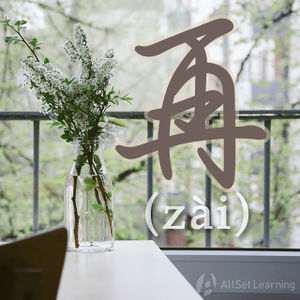Difference between revisions of "Expressing "in addition" with "zaishuo""
| Line 32: | Line 32: | ||
{{Rel char|再}} | {{Rel char|再}} | ||
{{Rel char|说}} | {{Rel char|说}} | ||
| − | {{Similar|Expressing " | + | {{Similar|Expressing "not only… but also"}} |
{{Similar|Expressing "In Addition" with "haiyou"}} | {{Similar|Expressing "In Addition" with "haiyou"}} | ||
{{Similar|"In Addition" as "lingwai"}} | {{Similar|"In Addition" as "lingwai"}} | ||
{{POS|Conjunctions}} | {{POS|Conjunctions}} | ||
{{Used for|Connecting ideas}} | {{Used for|Connecting ideas}} | ||
Revision as of 09:41, 15 October 2012
-
Level
-
Similar to
-
Used for
-
Keywords
"再说..." (zàishuō...) is used in a similar way as "In addition" or "Moreover", in that it is adding on additional information or reasons to the topic at hand.
Examples
- 我 的 家人 想 去 美国 旅行,再说 我们 还 可以 看望 我们 的 亲戚。
- 现在 太 早 了,我 不 想 去,再说 那 个 商店 还 没 开门。
- 我 不想 帮助 他,因为 他 经常 说谎,再说 我 也 没 钱。
See also
Sources and further reading
Books
- Common Chinese Patterns 330 (汉语常用格式330例) (pp. 297)→buy
- Integrated Chinese: Level 2, Part 1 (pp. 17-8) →buy
- Modern Mandarin Chinese Grammar: A Practical Guide (pp. 252) →buy



